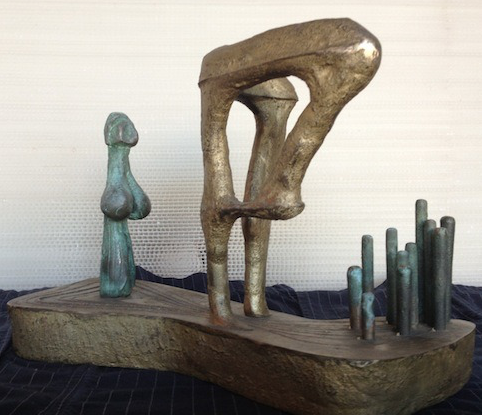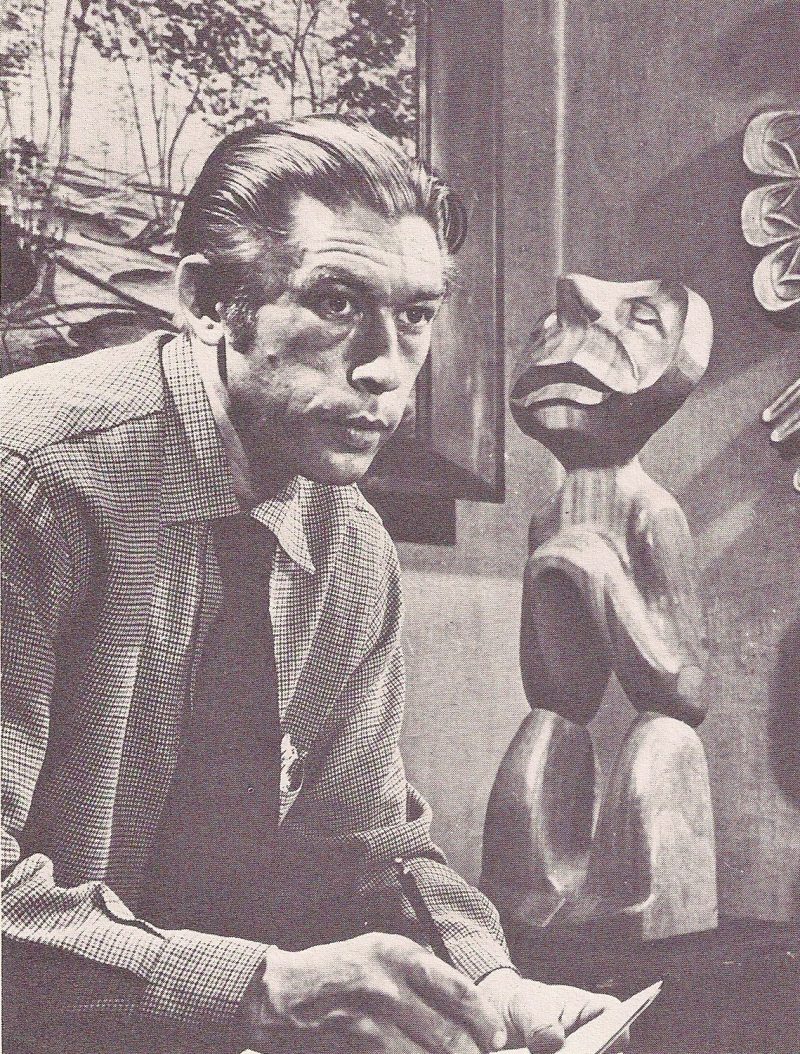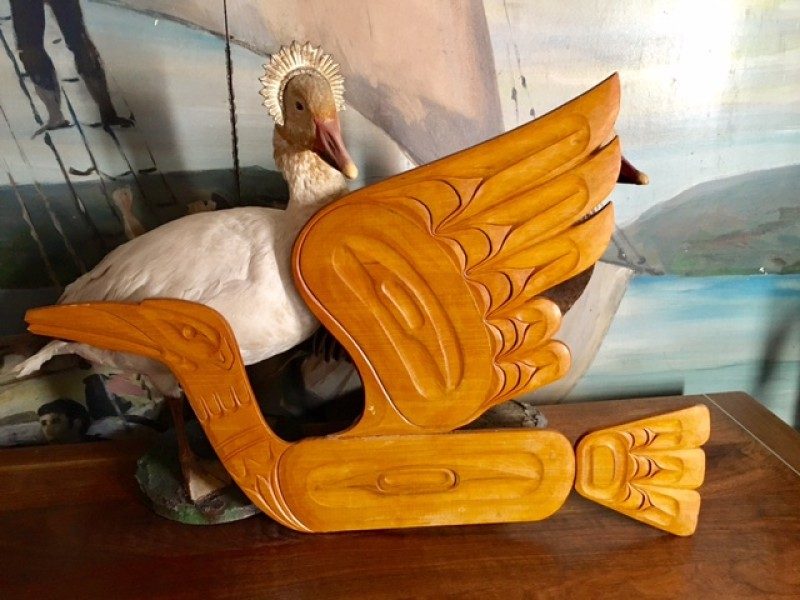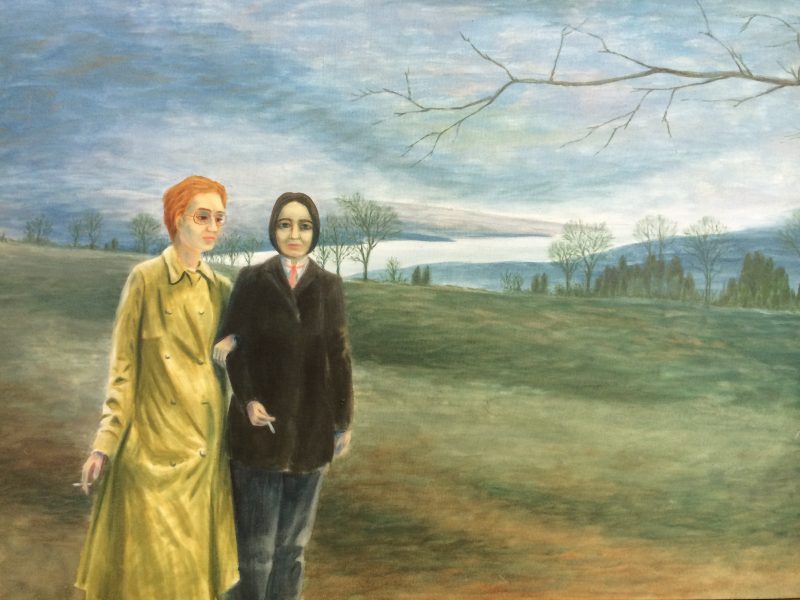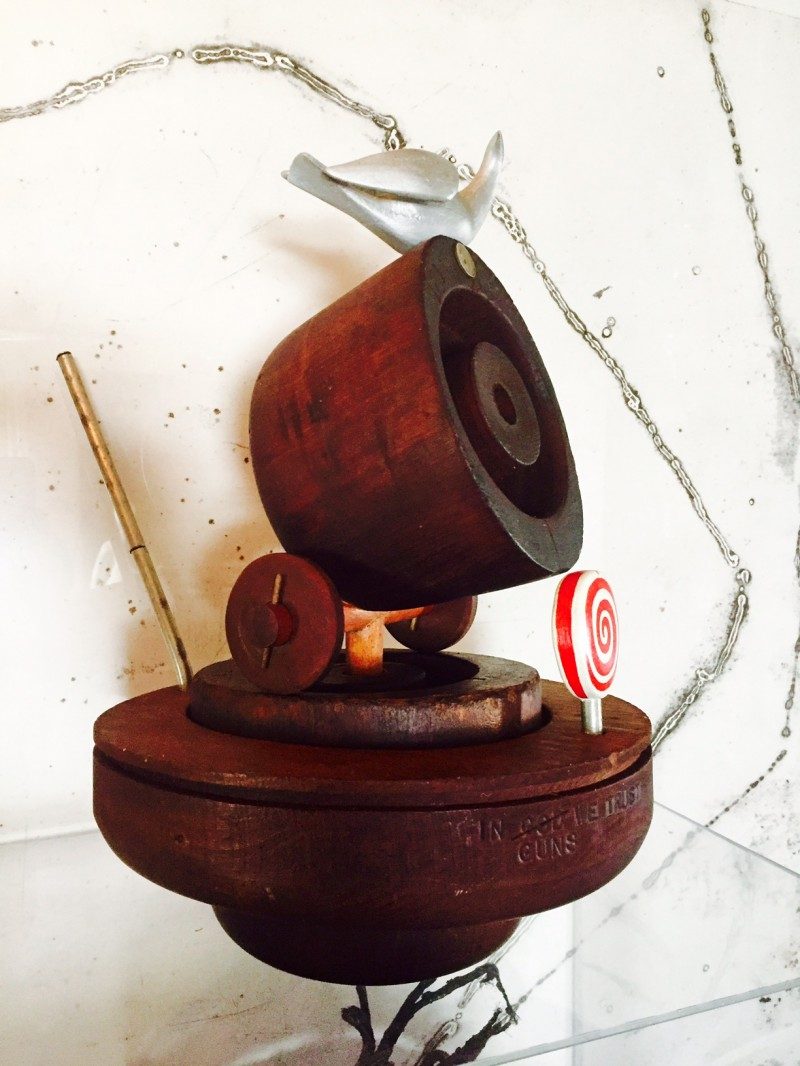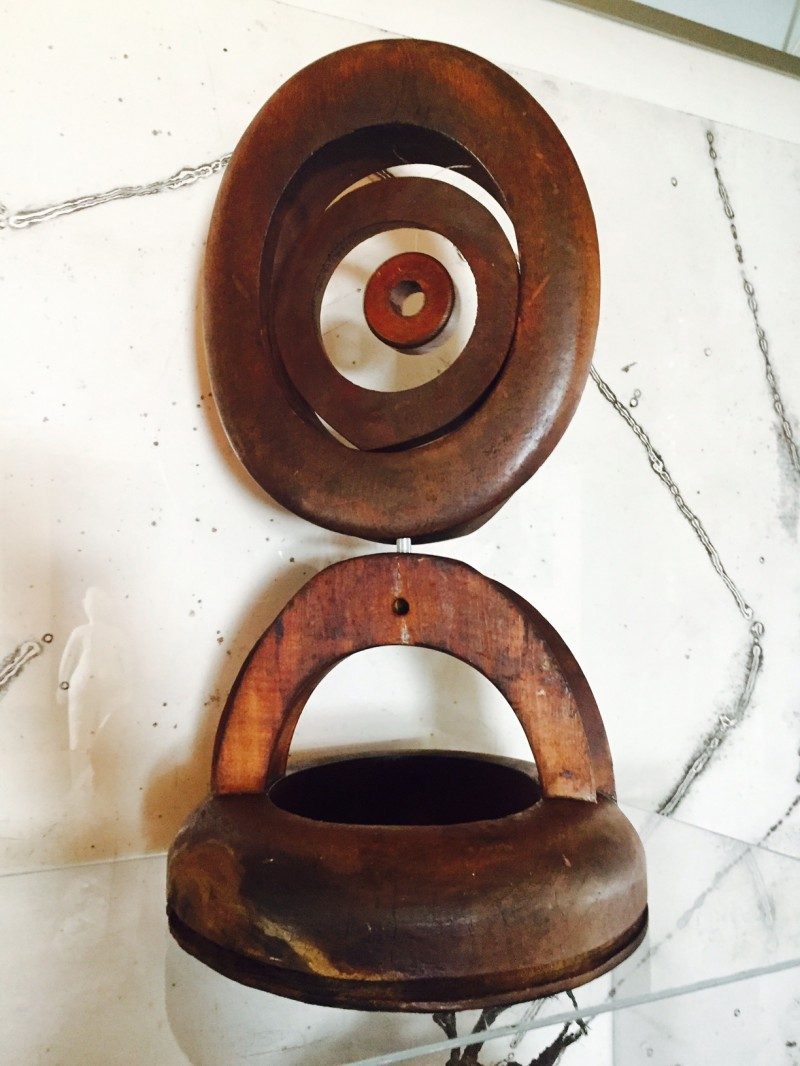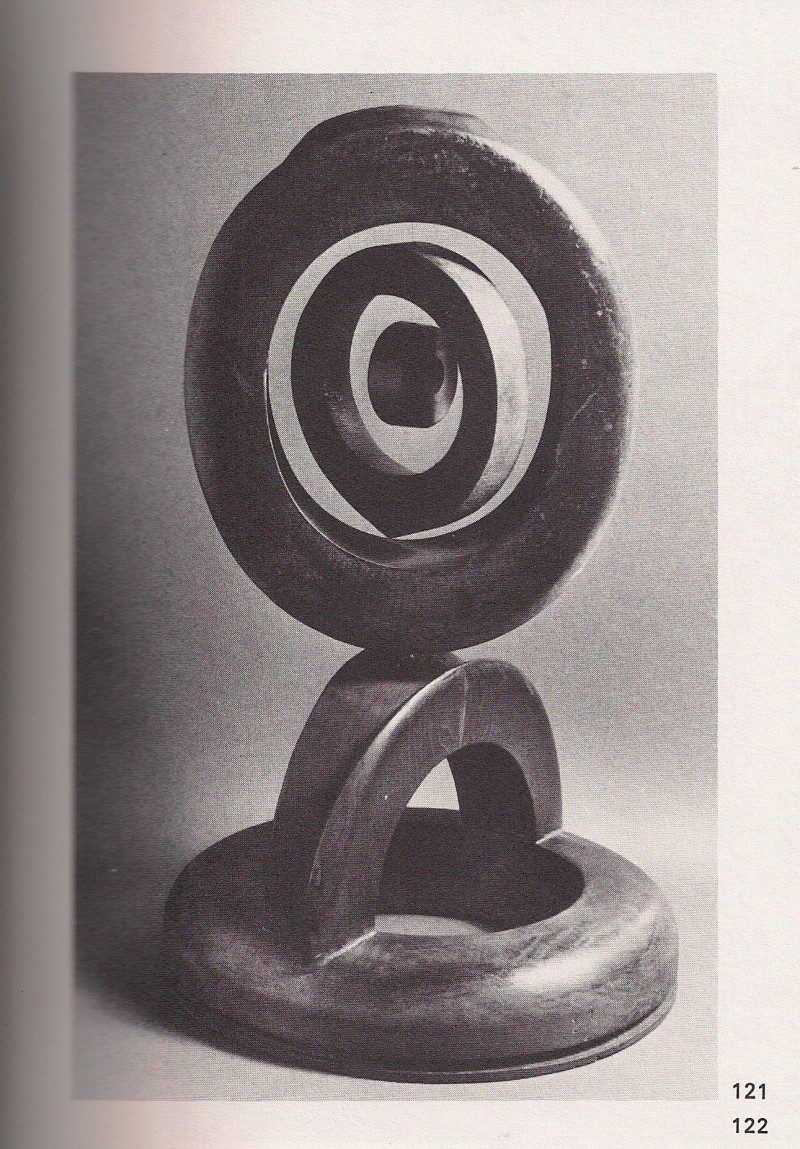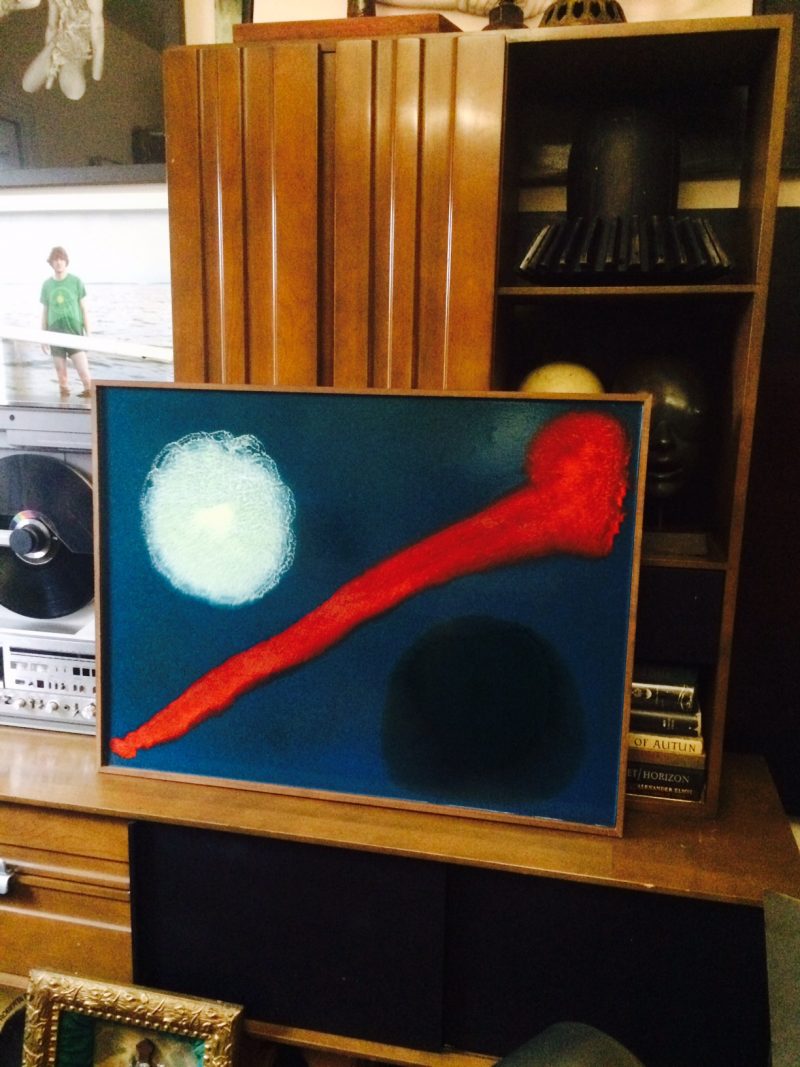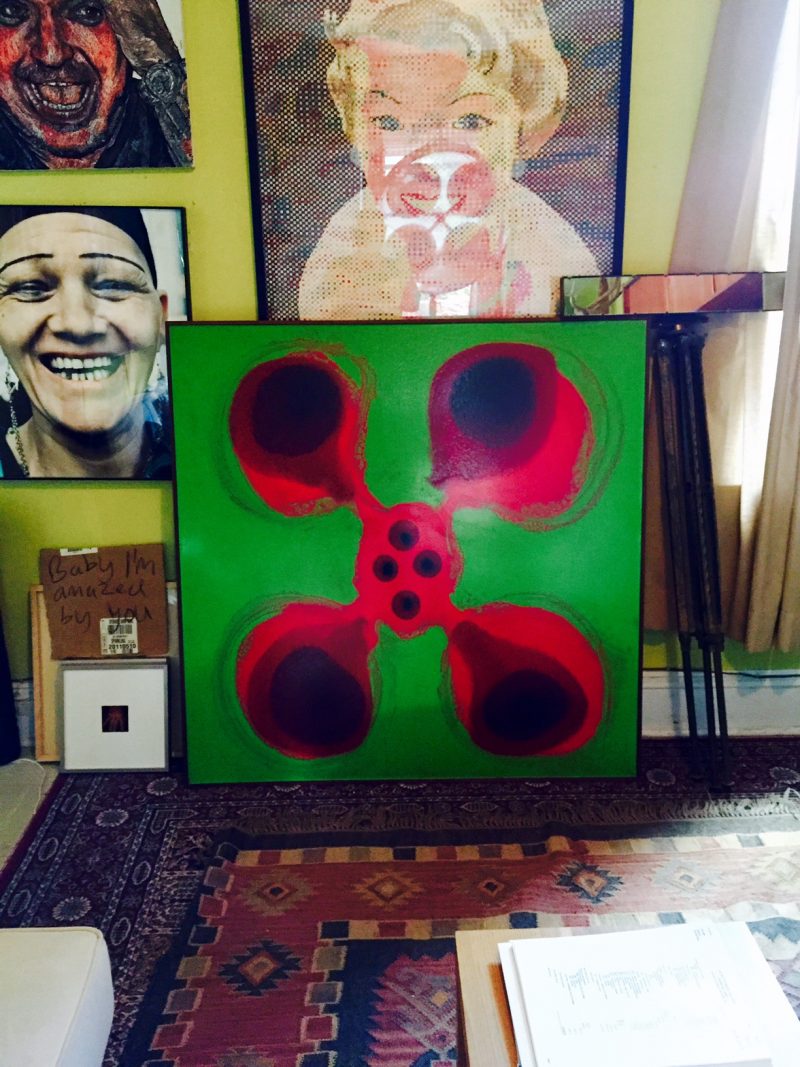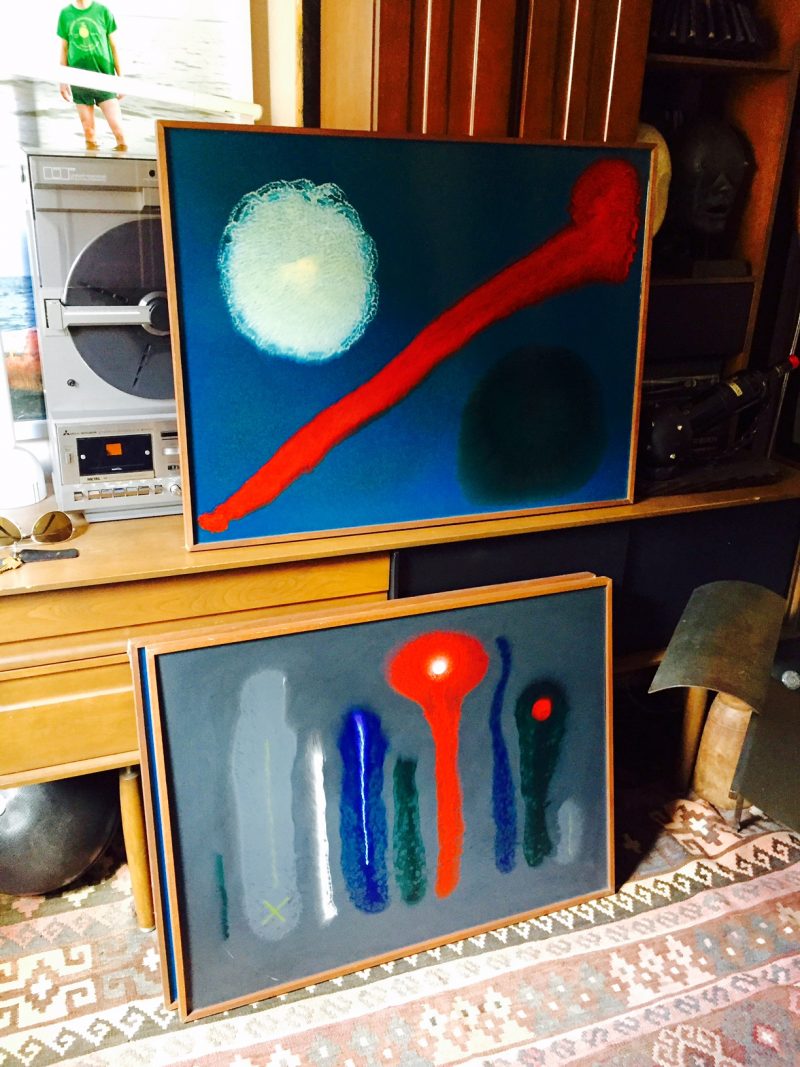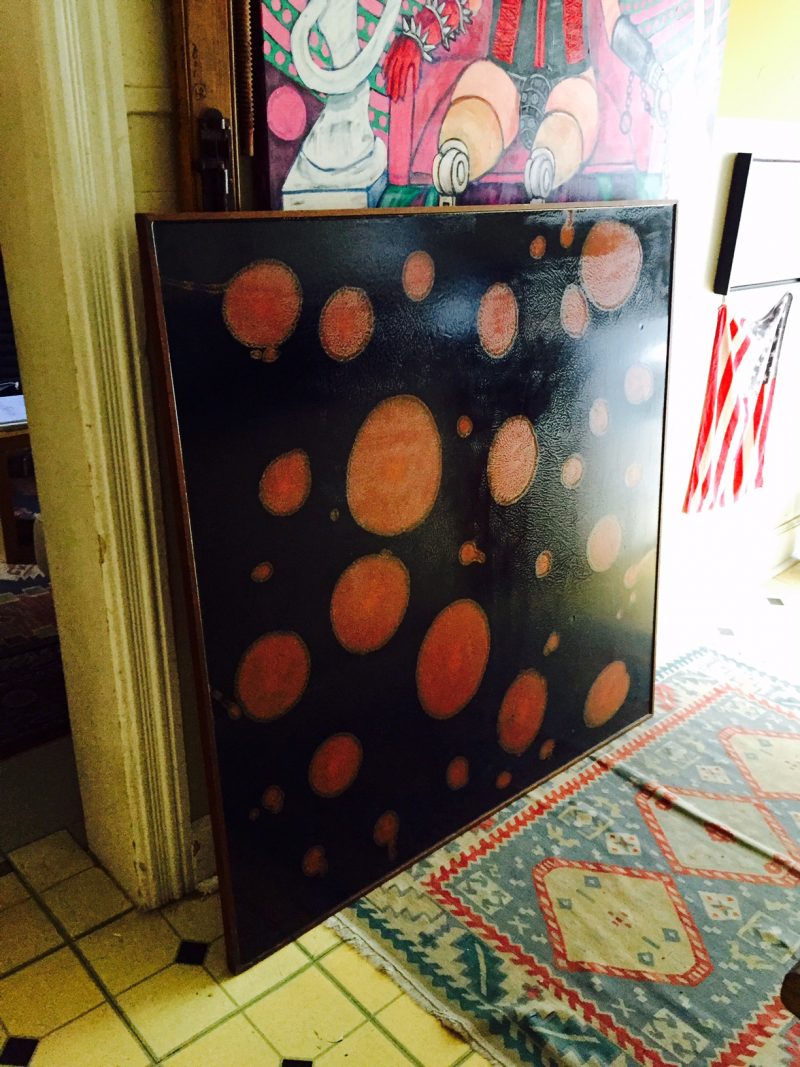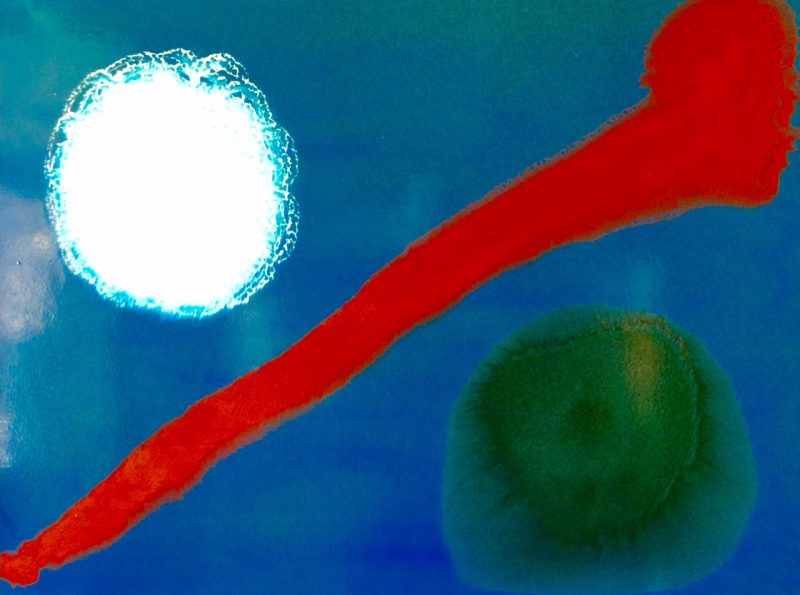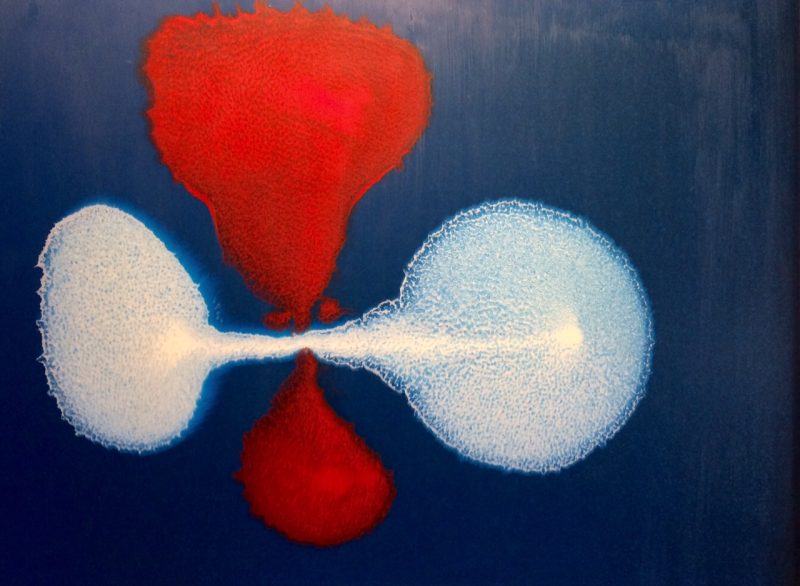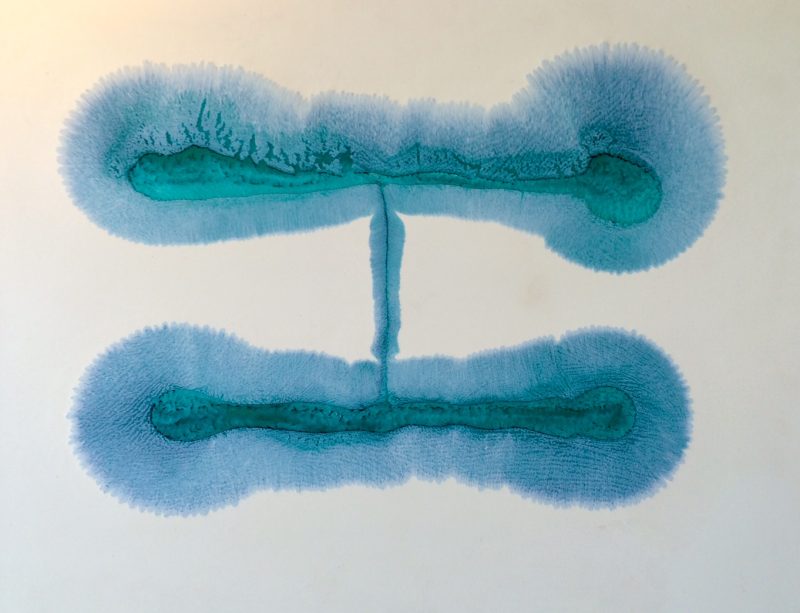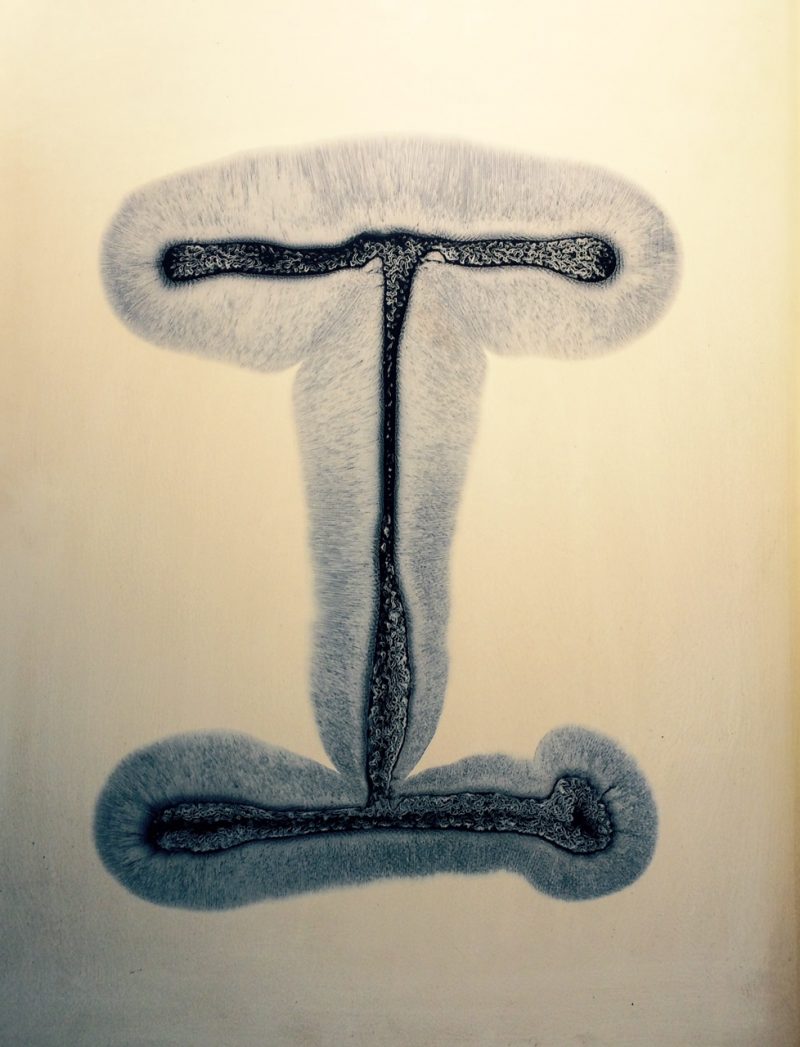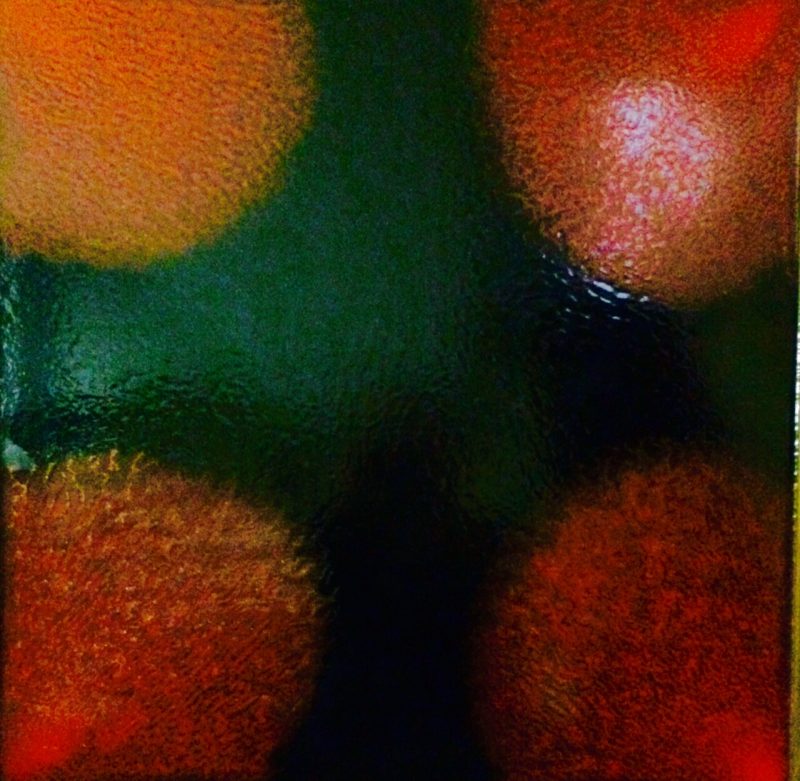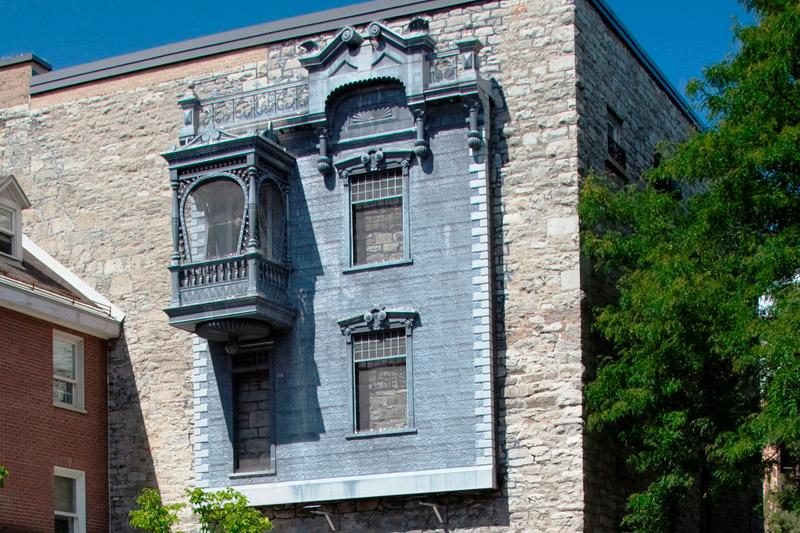Arthur ‘Art’ Price, Ottawa, Canada
ARTWORKS NOW AVAILABLE FOR SALE:
Born in Edmonton, Alberta, Canadian artist Arthur Donald Price attended Western Technical School where he received a bursary to study at the Ontario College of Art in the evenings, under various teachers including Franklin H. Carmichael, George Pepper and Frederick S. Haines. Naturally creative, he worked as a free-lance commercial artist, and later went on to study dance with Boris Volkoff, build sets and appear in productions. Later, Price studied pattern-making and industrial design. In 1943 he went to the National Film Board as a set designer and part-time animator working with Norman McLaren. It was while working at the N.F.B. that he met and married Dalila Barbeau, daughter of noted ethnologist and folklorist Dr. Marius Barbeau.
During his travels Price became acquainted with the art of the North West Coast Indians. He visited Indian villages, taking notes and photographs and making drawings of Indian art. He arranged the purchase and removal of totem poles, house posts, a community house and other pieces which established the Indian village at the University of British Columbia.
Later, Price opened a studio where he was able to continue wood-carving. In 1950 he began metal work in wrought iron, copper and subsequently, sterling silver. In 1953 he was commissioned to carve two large totem poles and three other large carvings for Jasper Park Lodge in Alberta. In 1954 he began casting in aluminum, iron and bronze. This led to his production of an impressive body of work on public sculpture commissions for government, corporations and industry.
For the Sampson-Matthews project, in the 1957–1963 period Canadian Paintings series, Price entered the graphic field with Iroquois Mask, contributing a total of seven First Nations-inspired pieces. These interpretations were based on original images by First Nations and Inuit artists in a variety of media, chosen by Marius Barbeau.
Arthur Price is represented in important corporate and public collections. A member of the Sculptors Society of Canada (1958), the Royal Canadian Academy (Associate-1960, Member-1973); The Arts Club, Montreal (1958), and the American Craftsmen’s Council (1960).
Exhibition Statement:
The Spaceship in the Garden: Selections From the Archives of Art Price
The work of Art Price presents something of an emphatic return to the notion of ‘a life in art.’ His diverse multidisciplinary practice expresses the figure of an artist driven by an open ended yet inexhaustible sense of curiosity. Throughout the course of a long, productive career, beginning around 1940 until his death in 2008, Price worked in sculpture, painting, drawing, and was perhaps most recognized for his commissioned public installations displayed in the Ottawa region and across other Canadian cities. La Petite Mort Gallery remembers the work of the late, esteemed Ottawa artist from a slightly unconventional perspective, bringing together a selection of lesser-known works from his personal archives held by son Rene Price.
The Spaceship in the Garden presents a series of “abstract polyester paintings” created in 1960 that experiment with colour, figure and process. Here, combinations of wet pigments are strategically poured into flatbed wooden supports and gently altered to achieve varying end results that appear as shape-shifting biomorphic constellations. ‘Accidents’ are welcomed, if not pursed altogether, allowing for potential new ways of understanding both the malleability and fragility of the medium itself. Importantly, because these paintings were not produced as commissions (unlike many of his other works), this exhibition presents us with the rare opportunity to view Price’s practice from the inverse, signaling a shift from the public to the private, and from large-scale modernist sculptures to post-painterly contingent forms experimentation.
The exhibition also includes a new large-scale sculptural work by the Rene Price, consisting of a “heaven bound space ship” filled with multiple rolled up canvases of the late Price’s work, offering an unlikely, posthumous ‘collaboration’ between father and son. The sculpture touches on the dualities of the astronomic and the earth bound, and the heavenly and the everyday, both of which are present, although affectively, in the late Price’s abstractions. For this brief transitory moment of overlapping personal histories, the rocket ship has landed in the garden.
Price once stated “On the farm I had learned to work hard on a job until it was done.” Read from the inverse perspective, this seemingly mundane description expresses the figure an artist who worked tirelessly in the transitory space of the undefined – at once between commissions, between styles and movements, and between universal and idiosyncratic ways of seeing.
Written by Adam Barbu, June 2015.
IMPORTANT COMMISSIONS by the Artist:
- ‘Labyrinth 67’, aluminum, polychrome, 10 feet 6 inches. For the Labyrinth Building at Expo 67. Architects: Bland, Lemoyne & Shine, 1967.
- ‘Not Even a Sparrow Falleth’, Bronze sculpture, Awarded the Grand Prize in Montreal’s National Monument and Fountain Competition, 1964.
- ‘The Universe is You’, Nickel stainless Steel, 144 inch diameter sphere, Administration Building, National Research Council, Ottawa. Architects: Meadowcraft & MacKay. 1966.
- ‘Communigraph’, aluminum, 24 foot bronze sculpture for the new Postal Terminal Building, Ottawa. Architects: Balharrie, Helmer & Gibson, 1967.
- ‘Bird Tower’, aluminum & stainless steel, 12 feet, first shown on the Sparks Street Mall, Ottawa, 1966
- ‘Unity in Diversity’, nickel stainless steelsculptured fountain, 12 feet – 6 inches, Sparks Street Mall, Ottawa. Architects: Balharrie, Helmer & Gibson, 1967.
- ‘Man Above Matter’, bronze sculpture, for 25 foot piece at Coliseum Building, Canadian National Exhibition, Toronto. Architects” Arthur & Fleury, 1963.
- ‘Textured Screen’, twenty-six textured aluminum castings produced in collaboration with Julien Hebert for Place des Arts, Montreal. Architects: Desbarats, Dimakopoulos, Lebensol & Size, 1963.
- ‘Abstract Wall’, concrete, 14 by 168 feet, Kootenay National Hot Springs, B.C., 1967-8.
- (two similar commissions for the same company, but two seperate locations): ‘Collecting Cosmic Rays No 1, bronze, 72 inch sculpture, Bell Canada Company, Chicoutimi, Quebec & ”Collecting Cosmic Rays No 2, 51 inch sculpture, Bell Canada Company, Smith Falls, Ontario. Architects: Ross, Fish, Duschemnes & Barrett, 1963.
- ‘Family Group’, bronze, 9 x 6 feet, for the Prudential Assurance Company of England, Head Office, Montreal. Architects: Barott, Marshall, Merrett & Barott, 1959 – 60.
- ‘Girl with Cat’, bronze, 50 inches, produced for the Firts Canadian Conference of the Arts, 1961, Currently at the Saskatoon Gallery, Saskatoon, Canada.
- ‘Birds & Trees”. aluminum and bronze maquette, 40 Foot Mural. Gloucester High School, Ottawa. Architects: Balharrie & Helmer.
- ‘The Blackboard’, bronze, aluminum & copper on slate, 96 inches, Blackburn Public School. Architect: W. Sproule, 1955.
- ‘Untitled’, Abstract patterns in concrete, unknown dimensions, massive wall at the Radium Hot Springs pool, Alberta.
- ‘Arms of Ottawa’, Canadian coat of arms emblem etched in glass & bronze door pushes, Ottawa City Hall, Ottawa.
- ‘Untiled’, Wood block wall in four sections, cedar blocks, 4 x 4 x 12 inches each, Labyrinth Building, Expo 67, Montreal, Architects: Bland, Le Moyne & Shine, 1967.
- ‘Regal Lion’, metal sculptured crest for the Royal Box, National Arts Centre, unknown dimensions & date.
Who is Art Price?
A Dictionary of Canadian Artists
PRICE, Art (Arthur Donald Price)
b. 1918 – 2008
Born in Edmonton, Alberta, the third of four children of Malen Lemuel and Mary Emily (Courtenage) Price. His parents were of Welsh and Pennsylvania Dutch extraction. Art’s father was a builder and contractor. In 1921 the family moved east to Ontario and eventually to Waterford, then to a farm five miles away. Art rode his bike to high school in Waterford, from the beginning of the school year right through the winter. Coming in from the snow or rain he spent long hours drying himself out but was resolved to attend and seldom missed a day. At home on the farm his chores included milking cows, grooming horses and feeding the livestock which gave him an early sense of responsibility. He helped his father in his workshop, first handing him the tools he needed then working with wood under his father’s direction. His father felt a farm was an ideal place for children as it gave them lots of room. Art liked everything about his father’s carpenter’s shop, the smell of the wood, the sound of the saw ripping through the boards and the crunch of shavings under his feet as he walked about. There was one thing however that gave him even greater pleasure and that was doing art work at high school which eventually led to his decision to become an artist. He attended Western Technical School were he received a bursary to study at the Ontario College of Art, evenings, under various teachers including Franklin Carmichael, Eric Aldwinckle, George Pepper, Fred Haines and others. Days he worked at various jobs from being a butler and chauffeur for a private family to, later on, free-lance commercial art. He studied dancing with Boris Volkoff. He designed and built sets for the Volkoff Ballet Company and appeared in productions.
But finally, like most young men, he got the urge to travel and hitchhiked to New York, Chicago, California and along the border of Mexico then up to Vancouver where he joined the Merchant Navy as a cook’s helper shipping between California and Alaska. During his travels he became acquainted with the art of the North West Coast Indians. He returned east to Toronto in 1938 where he continued designing for the stage then the same year went to New York for a short course in fashion design at McDowell College where he also took pattern-making and industrial design. In 1939 he returned to Canada where he completed preliminary army training but with his previous experience at sea he chose service in the Merchant Navy this time in the Atlantic where he served as a steward. Between sailings he had a chance to see the Maritimes and Newfoundland. After a convoy shakeup he had the opportunity to return to Toronto where he joined the army and was soon designing sets for the Canadian Army Shows. He crossed Canada with the first show and designed sets for travelling shows overseas to all the war theatres. This period was a great source of happiness to him as there was plenty of hard work, activity and warm associations. Many of his sets were used by the famous comedy team Wayne and Shuster. In 1943 he went on loan from the army to the National Film Board as a set designer and part-time animator working with Norman McLaren. The N.F.B. was engaged in making war related films. It was while working at the N.F.B. that he met and married Dalila Barbeau, daughter of noted ethnologist and folklorist Dr. Marius Barbeau. Dalila and Art were to have five children: Hélène (1945), Caroline (1948), René (1949), Nina (1953) and Tania (1957).
In 1946 they moved to Hollywood, California where Art intended to continue set designing for films but they arrived at the outbreak of the big studio strikes and the kind of work he sought was simply not to be had. He switched to cabinet making and fared very well. But he returned to Vancouver in 1947 to work for the National Museum of Canada under the direction of Dr. Barbeau. He visited Indian villages on the east and west coasts of Vancouver Island and up the coast to Prince Rupert and vicinity also the Queen Charlotte Islands, taking notes and photographs and making drawings of Indian art. He arranged the purchase and removal of totem poles, house posts, a community house and other pieces which established the Indian village at the University of British Columbia. Many of the natural forms sketched during this period he later transformed into bronze sculpture and other of his sketches went into the western phase of his “Native Arts of Canada” series used by the Canadian Pulp and Paper Association. In 1948 he moved to Ottawa where he resumed set designing for the N.F.B. on a free-lance basis. During the summers of 1948 and 1949 he lectured to teachers in Toronto on Indian art. He finally decided to make Ottawa his permanent home and with his father’s help he built a house at Cyrville just outside Ottawa. His house doubled as living space and studio but as his family grew the room was too limited so he decided to build a studio and shop on the property where he was able to continue wood-carving and in 1950 metal work in wrought iron, copper and later sterling silver. He had replica tools made of the original tools used by B.C. Indians. This work was done by his friend Leo Mainville, a local blacksmith at Blackburn Corners. From his new shop Price turned out an impressive number of commissions for wood carvings from private collectors, associations, public institutions, hotels, corporations, churches and museums. In the summer of 1951 he took time out for a sketching assignment for the Hudson’s Bay Company magazine The Beaver, when he travelled along the Mackenzie River in the Northwest Territories making drawings of the settlements and the countryside reproduced in the article “A Mackenzie River Sketch Book.” Some of the paintings based on his sketches were acquired by the Hudson’s Bay Company and the Ford Motor Company.
With his considerable experience in set designing he was appointed Technical Director for the Canadian National Exhibition grandstand show in Toronto for 1952. In 1953 he was commissioned to carve two large totem poles (Grizzly Bear and Raven Totems) and three other large carvings (Thunderbird & Whale, Coat-of-Arms of Canada, and Thunderbird with Branch) for Jasper Park Lodge in Alberta. He installed all five works on location. In 1954 he began casting in aluminum, iron and bronze which led directly to much of his major work. In 1955 he completed “The Blackboard” for Blackburn Public School using bronze, aluminum and copper images mounted on a large slab of purple slate, itself carved with recessed abstract shapes of a fish and a hand. During a two-man show of sculpture at the Montreal Museum of Fine Arts in which Price was a participant, Robert Ayre noted, “Art Price, whose widespread circulation on Canada’s five-cent postage stamp and who is exhibiting some of his sculpture in the Montreal Museum of Fine Arts this month, is a man of many skills. He is still under forty but he has had many careers and there is an astonishing variety in the contributions he has made to Canadian life. . . . His sculpture includes everything from silver bracelets and carved wooden boxes and trays to trophies, weather-vanes, crucifixes, pulpit panels, standing figures and three-dimensional murals. Much of it is original in concept, most of it owes its inspiration to West Coast Indian art. As a designer, and as a craftsman who loves materials and tools and has a powerful way with them, Price has a deep respect for native traditions, and his knowledge owes not a little to the privilege of working with his father-in-law, the distinguished Canadian ethnologist, Dr. Marius Barbeau. When a museum wants a totem pole and the great originals are not to be had, or the Canadian Government needs one for an exhibition abroad, they can depend on Price to carve a replica marvellously accurate in style and spirit.
Along with all this, he has painted landscapes, published travel sketches, illustrated books of legends, and designed sets for motion picture and television productions.” In 1958 Price carved some of his fine totems, plaques and panels for the Royal York Hotel’s British Columbia Room. In this year too, he completed the casting and installing of the Coat-of-Arms of the City of Ottawa for its new city hall. A note on this work was carried in Foseco Foundry Practice as follows, “Artist, Craftsman, Foundryman – We feel sure that all our readers will join in our congratulations to Art Price of Ottawa, Canada – particularly when it is realized that the cores were carved from dried sand blocks. Here are some extracts in his own words from his description of the making of the casting. ‘When I started casting I felt I wanted to try carving directly in the material in which the metal was to be poured. This being the purest, simplest and most direct method, similar to carving wood or working stone. The large shield in Aluminum was cast from a pattern which I made, as were the parts of the ribbon or banner. The small elements in the shield, crown, mapleleaf, etc., and the letters on the ribbon were cast in manganese bronze from patterns I made. All the other parts of the Coat-of-Arms were carved by myself in green sand, with cores where needed carved from large chunks of baked sand.” He thought of the possibilities of carving directly into the material in which the metal was to be poured while watching foundry operations. He found a sympathetic foundryman in William Bond, owner of Bond Brass Limited, and working together they carried out a series of experiments in casting metals with the assistance of Canada Council funding. After five years he finally achieved the degree of proficiency necessary to undertake monumentally sized sculpture. Since then he has produced a remarkable number of works. A few of them are: the magnificent “Family Group” for the lobby of the Prudential Assurance Company of England’s head office building in Montreal (1960). This work contains 5,950 pounds of bronze. Five statues comprise the “Family Group,” with over-all dimensions of 8 ft., 7 in. tall; 9 ft., 6 in. long; and 5 ft. wide. The artist explained his procedure for this work in Foundry, January, 1961. His original 19″ model for “Family Group” was produced in 1959 with an edition of four. In 1961 he completed “Girl with Cat” for display at the Canadian Conference for the Arts in Toronto. He explained to G. Joy Tranter, writer, how this work was conceived as follows, “Suddenly I hit on the idea of doing Nina, our fourth child, sitting in the large rocking-chair which Dr. Barbeau of the National Museum had given us some time ago. Then, to relax my model, I felt she should hold her dearest little friend the cat, who is called Sammy. I had always felt I would like to do Nina. Her straight hair with the bang, her almost sad face and compact little figure had always intrigued me. We all love the cat, so he was easy to include. After weeks of strenous work and very long hours . . . I finally completed the piece, crated it, and Nina, Sammy and the first French Canadian rocking chair in bronze were on their way to the big city.” The process for producing this work was carried in the February, 1963 issue of Foundry.
In 1962 Price completed a bronze bust of Queen Elizabeth II which was presented by the Victoria Daily Times to the City of Victoria on the occasion of the City’s centennial. The original bust, done by Peggy Walton Packard of Victoria, had been damaged by vandals in 1963. “Man above Matter” a 25-foot sculpture was produced for the entrance of the Coliseum Building in the Canadian National Exhibition Grounds in Toronto. It consisted of 300 separate mold pieces which had to be made for casting by Price. He produced them in his studio, and then moved them to the foundry where the bronze casting was poured. Sixteen realistic objects appear in the sculpture to illustrate the events held in the Coliseum. The shape of the work is basically three poles in a triangular arrangement with banners attached to each of them. On the banners are the realistic objects representing the activities held within the Coliseum. At the top of the sculpture, on a spar joining two of the poles is a human figure with arms stretched upwards. Canadian Coppermetals, Spring, 1964 and Foundry, June, 1964 describe details of how the work was carried out. In 1964 Price was awarded the grand prize in Montreal’s National Monument and Fountain Competition for his “Not even a sparrow falleth.” He chose the fountain to be dedicated to the memory of Jeanne Le Ber, recluse and humanitarian of New France. The 22-foot-high bronze sculpture was to consist of 20 airborne angels, cohorts with the leading angel holding a small bird outstretched in her hands. Price’s design was cited for its very moving allegorical expression (see Canadian Coppermetals, Spring 1966). “Your Daily Citizen” was his 1965 three-dimensional mural collage for the lobby of The Citizen Building which included elements that go into the daily production of news. In this work he combined mats, stereo plates, linotype and news rolls. Carl Weiselberger described it as “a highly attractive, logically developed three-dimensional mural in the shape of a circle.” Price’s 12’/z-foot-diameter stainless steel sphere “The Universe is You” was commissioned by the Department of Public Works’ fine arts programme and was designed and supervised by himself.
He was awarded in 1971 the coveted “Citation for Excellence in Fine Art in Steel” for the sphere. One thousand entries in fourteen categories were entered in the competition. The work was constructed by welding nickel stainless steel sheets together into two sphere halves then joining them together. The surface of the sphere was brought up to the highest finish possible (No. 7 finish) making joints undetectable to the naked eye. The sphere was installed on the outside front grounds of the Administration Building of the National Research Council of Canada located on the Montreal Road near Ottawa. The installation was completed in 1966. In 1967 Price’s “Unity in Diversity”, a fountain of nickel stainless steel forms was completed and installed in the Ottawa Sparks Street Mall. Almost rectangular in shape each stainless steel piece looks like a replica of a modern building but placed in an angular position to each other they present a fine artistic backdrop for streams of water that fall from the front of each of the forms. In 1968 he designed the huge 30 foot high sculptural shell motif which decorates the 22 story Shell Head Office Building on University Avenue in Toronto. Working for architects Marani, Rounthwaite & Dick, the work was produced by C.J. Rush Architectural Metals Limited of Toronto. Price had to design the sculpture so that it could be manufactured and be strong enough to hold together. It was decided to make the sculpture in two parts; a lower section approximately 8 ft. by 10 ft. and an upper section about 16 ft. by 20 ft. Projected wind and ice loads involved aerodynamic considerations. Other problems had to be solved including the best way of attaching the sculpture to the already completed building and lighting up the work in the most effective but practical way. Finally the work was assembled and hoisted into place by using a 100 ton crane with a 280 ft. long boom. The weight of the giant shell symbol is 15,000 pounds. In 1969 Price was made adviser to Indian Affairs for setting up the show at Man and His World. The display was to show artifacts from the collection of the anthropology museum of the University of British Columbia. The museum curator, Audrey Hawthorn was able to organize 5,000 artifacts of West Coast Indian culture together in one space for the first time after their storage in the basement of the museum for many years. Price designed “Communigraph ’70” for Ottawa’s new Postal Terminal. Government spending cutbacks of the day reduced his budget by 30 percent. This meant he had to use less metal and make radical alterations in the design. Originally he had intended to make rough-textured cylindrical forms but the casting would have been too expensive for the budget reductions. Instead he changed the forms to flat fins which were cast in a clay and sand mixture and welded together, giving the illusion of enclosing an actual volume, but in fact using much less aluminum. The work was carried out at Alloy Foundry in Merrickville. The concept of a three dimensional graph symbolized the lows and highs of human physical and mental communication potential (see La Fonderie Belge 8-9-10, 1971, Bruxelles). In 1973. he completed “Sails Aflame” sculpted of cast aluminum 18 by 10 by 6 ft. for the pool at the entrance of the Harbour Castle Hotel, Toronto (see The Ottawa Journal, Sept. 27, 1975). I
n 1973 he was also commissioned to create an interior hanging sculpture in glass and stainless steel for the new main branch of the Ottawa Public Library in downtown Ottawa. For the National Capital Commission he restored an 80-year-old facade “Tin House.” The galvanized iron pieces remaining from the original structure had deteriorated over the years. He made new pieces and rusted them to match the old and sculpted other missing parts for the assembly. Completed, it now hangs on a brick wall facing a courtyard off Sussex Drive. In 1974 he was appointed to the advisory committee on design of the National Capital Commission. Over the years he has created sculpture to listen to by first producing a small flute carved from grey slate made after the fashion of west coast Indians. The flute was commissioned by the Canada Foundation for a musical trophy and won by Anne Eggleston in 1953. Anne didn’t believe the trophy would play but couldn’t resist trying to make sounds with the sculpture. Surprised to find it worked she described the experience of hearing an ocean wind and tasting its salt. Price conceived the idea of producing sculpture to make sounds from this experience. In the following years he produced a maquette or model of a 10-note “Music Machine” cast in bronze and stainless steel. The model was fitted with various sizes of bronze bars and steel plates to make an carillon sound by pressing different pedals and levers. Next he made a bronze music trophy in the shape of a large tuning fork with musical diversity close to that of a Xylophone. Five successive bars cross over the fork to give it the entire musical scale in harmony depending on the mood of the player and what material is used to strike the fork. His “Unity in Diversity” on the Ottawa Sparks Street Mall has a subtle and pleasing sound which refreshes many visitors who pause awhile. When planning the fountain he designed five nickel stainless steel pillars of varying heights set at different angles in the fountain pool to bounce the sound from surface to surface. His “Sound Pods” for the exterior of Bell Canada in St. Lambert, Quebec give a wail in several tonal keys when teased by the wind. “Rhythm in Rods” consists of 36 cast aluminum bars joined to a horizontal part 48 inches long. The bars vary in lengths and diameters to create a multitude of sounds when tapped with a solid material. “Musical Interlude” was an 8-foot-tall by 5-foot-across sculpture of welded steel, cast aluminum, bronze and wood. It made music when cranked and drew attention of crowds at the Royal Canadian Academy show at the National Gallery of Canada in 1970. For details on his sound sculptures see The Ottawa Journal, Saturday, Feb. 9, 1974. In 1975 he completed a bronze plaque with Canada’s old Supreme Court Building on it for the Canadian Bar Association who presented it to the Wellington Street Supreme Court building on the occasion of the Court’s 100th anniversary. He designed in 1976 a sundial for the National Capital Commission who had received savings of Max Florence of Toronto to help beautify the capital city as his token of appreciation for living in Canada. The sundial, a four-foot cube time-piece carved from Beebe, Quebec granite is located near the official residence of the Prime Minister of Canada and is dedicated to Max Florence.
In 1977 Price restored heraldic figures for the foyer of the Opera House in the National Arts Centre. The figures had been stored in government warehouses for twenty-five years. The originals stood guard over the entranceway to Westminster Abbey during Queen Elizabeth’s coronation. Price has been recently working at his studio and home on Innes Road at Blackburn Hamlet where he has established a gallery. Visiting there in 1981 Nancy Baele in Art Reviews for The Citizen noted, “Widely known as a sculptor, his attention has shifted over the last three years to the graphic arts. His studio reflects this change of focus with more than half its floor space now used for painting on different types of tracing and acid free papers. He also uses the pattern-making fabric of the fashion industry and there is lots of evidence that he hasn’t abandoned oil and canvas. He pulled out rolls of paintings from one of the bins and shelves which line the walls of his studio to show his recent buoyant works of roller skates and bacchanalian revels done with acrylic dyes on large sheets of tracing paper. When wet, the paper wrinkles, collecting heavy colors in its creased pockets and creating an unusual textured shading on its translucent surface. Price routinely works in his studio from 8 a.m. until 6 p.m. with many evenings spent there as well, experimenting with an idea or technique that excites him.” He is represented in hundreds of private and corporate collections in Canada and elsewhere, also many museums. A member of the Sculptors Society of Canada (1958), Royal Canadian Academy (ARCA 1960, RCA 1973); The Arts Club, Mtl. (1958); American Craftsmen’s Council (1960).
References
– NGC Info. Forms and biographical data, artist’s file, NGC Library
– Vancouver Daily Province, July, 1947 “Alaska Beckons by Marius Barbeau” reviewed by Torchy Anderson (Arthur Price, brilliant young artist)
– The Beaver, Hudson’s Bay Co., Wpg., Mar., 1952 “A Mackenzie River Sketch Book” by Art Price
– Road & Wheel, August-September, 1954 “CGRA To Make Good Roads Education Award” (A.P. creates trophy for best publicity for better roads and streets)
– Ottawa Journal, Ont., Jan. 16, 1954 “Razor-edged Adze Carves Career For Ottawa Artist” by Stephen Franklin
– lbid, Sept. 29, 1954 “Canada Furnishes Decorates Room in Rome FAO” (Price carves map, coat-of-arms and crests for Food & Agriculture Organization of U.N. in Rome)
– Ottawa Citizen, Oct. I, 1954 “Many-sided Arthur Price Turns To Postage Stamps” by Fred Inglis
– Timber of Canada, Vol. 15, No. 6, February, 1955 “Gillies’ White Pine Office” (A.P. carves front panel for desk)
– Lincoln-Mercury Times, Dearborn, Mich., U.S.A., July-August, 1955 “The River Nobody Knows” by Richard L. Neuberger/paintings by Arthur Price
– Globe & Mail, Tor., Ont., Apr. 25, 1956 (photo of Tanya Moiseiwitsch, scenic and costumes designer for film “Oedipus Rex”, Marie Day, maker of masks for cast and Art Price, art director of film)
– Canadian Art, Winter, 1957 “An Appreciation of the Native Art of Canada” by Robert Ayre (Art Price’s work)
– Alcan Ingot, Mtl., March, 1957 Vol. XVI, No. 3 “An Artist and Aluminum”
– Montrealer, January, 1957 “Art Price . . . Man of Skills” by Robert Ayre
– Ottawa Citizen, Oct. 22, 1958 “Cyrville Studio Producing Bits of ‘Canadiana”‘
– The Arts in Canada, Ed. M. Ross, Macmillan, Tor., 1958 “Sculpture” by William S.A. Dale, P. 40-41
– Canadian Hotel Review and Restaurant, Feb. 15, 1959 “History, traditions, folklore, scenery, products and geography give artists, architects chance to show . . . how they build decor around Canadian themes” P. 40-41
– Foseco Foundry Practice, No. 134, April, 1959 “Artist, Craftsman, Foundryman” (City of Ottawa crest cast from mould carved in greensand)
– Canadian Art, August, 1959 Vol. XVI, No. 3 “Coast to Coast in Art” (The Welcoming Birds installed for opening of new air terminal at Gander, Newfoundland), P. 203
– Canadian Metalworking, September, 1959 “Foundryman’s craft creates works of art”
– Imperial Oil Review, December, 1959 “The Man with the Wooden Wife” by Marius Barbeau (illustrations by Art Price)
– The Canadian Red Cross Junior, March, 1960 “Art Price”, Part One by G. Joy Tranter
– lbid, April, 1960 “Art Price”, Part Two by G. Joy Tranter
– Ottawa Journal, Sept. 24, 1960 “Versatile Art Price Ranks High Among Today’s Top North American Artists” (Creative Canadians – First of a Series on Ottawa Artists) by Scott North
– Canadian Art (Special issue on architecture and allied arts), November, 1960 “Art Price” by Alan Jarvis, P. 364-365 (photos of “Sound Symbols” Bell Canada, St. Lambert, Que.; “Collecting – – Cosmic Rays” Bell Canada, Chicoutimi, Que.; “Coat-of-Arms”, Ottawa; “Family Group”, Prudential Ins., Mtl.)
– Foundry, Cleveland, Ohio, U.S.A., January, 1961 “Sculptor Carves in Sand in Statuary Molding Process” by Art Price
– Canadian Metalworking, Don Mills, Ont., April, 1961 “How would you do the casting?” by V.H. Furlong (research by Art Price and Bond Brass)
– Canadian Copper & Brass, Tor., Summer, 1961 “Artistic Metalwork”
– lbid, Fall, 1961 “Castings – A Few Examples of the Work of An Outstanding Canadian Sculptor”
– Halifax Mail-Star, N.S., Oct. 30, 1961 (Dalhousie Univ. acquires small version of “Family Group”)
– La Fonderie Belge, Brussels, Belgium, November, 1961 “Fonderie et art moderne” par A. Pirson, P. 299-303, 329
– The Canadian Red Cross Junior, February, 1962 “Arthur Price’s Girl With a Cat” by G. Joy Tranter
– Canadian Catholic Institutions, March-April, 1962 “Working with copper . . . To Produce Liturgical Art” by R. Wardell
– Copper, Lond., Eng., Spring, 1962 “Sculptor – Foundryman” (translated excerpts from La Fonderie Belge above)
– Victoria Daily Times, B.C., May 23, 1962 “At Work on Times Centennial Gift” (casting of bronze bust of Queen Elizabeth by A.P.; original made by Peggy W. Packard damaged by vandals)
– lbid, July 30, 1962 “New Bronze Bust of Queen Unveiled Sunday at 3 p.m.”
– Foundry, Cleveland, Ohio, U.S.A., February, 1963 “Girl With a Cat” by Art Price, P. 152
– Design Engineering, Tor., June 1963 “‘New frontier’ for foundrymen – Metal sculptor uses polystyrene patterns” by A.A. Knapp
– Globe & Mail, Tor., Ont., Mar. 28, 1964 “Man over Matter” (sculpture for Coliseum, CNE)
– Canadian Coppermetals, Tor., Spring, 1964 “Man Above Matter” (25 ft. sculpture for Coliseum Bldg., CNE cast in bronze)
– La Fonderie Belge, 3 Mar., 1964 “Art et technique” par Alex Pirson
– Foundry, June, 1964 “Man Above Matter” by Art Price
– The Montreal Star, Oct. 28, 1964 “Sculptor From Ontario Wins Fountain Prize”
– Journal of Royal Architectural Inst. of Can., Tor., Ont., September, 1965 “Montreal . . . Achievement and Faith” by A. Aarons
– Canadian Coppermetals, Fall, 1965 “‘Pop’ Art – A study of sun and shadow striking contrasts and surface texture . . .”
– Ottawa Citizen, Ont., Sept. 16, 1965 “Art tribute to a daily wonder of production” by Carl Weiselberger
– Canadian Coppermetals, Spring, 1966 “Creative Casting” by Art Price (treatment of molds)
– Time (Canada), Apr. 22, 1966 “The Arts” P. 11
– Allied Arts Catalogue, Vol. I (RAIC), October, 1966, P. 31
– Agnes Etherington Art Centre Permanent Collection, 1968, No. 112
– Shell News, June 6, 1968 “Super Shell!”
– The Ottawa Journal, Sat., Dec. 14, 1968 “Scallop Shell Motif”
– A Cross-section of Work by Art Price, 2797 Innes Rd., Ottawa, 1968
– Engineering & Construction, January, 1969 “Problem sculpture poses many challenges” (Emblem for 22 storey Shell Bldg., Tor.)
– Time (Canada), Aug. 8, 1969 “The Arts – The People of the Potlatch” (Price advised Indian Affairs for exhibit)
– Ottawa Journal, Sat., Aug. 16, 1969 “Faces of Ottawa – Arthur Donald Price” by W.Q. Ketchum
– Ibid, Oct. 10, 1970 “Ottawa Artists (I) – ‘Ours is not simply to fill an empty space'” by Valerie Knowles
– Ottawa Citizen, Sat., Dec. 5, 1970 “Three years’ hard labor – City’s shining new sculpture survives the ‘squeeze'” (budget cutbacks on ‘Communigraph ’70) by Jenny Bergin
– Globe & Mail, Tor., Ont., Feb. 4, 1971 “A tribute to Communication” by Kay Kritzwiser
– The Despatch, DPW, Ottawa, Fall, 1971 “Fine Arts Sculpture Wins Award”
– La Fonderie Belge, October 9, 1971 “Communigraph 70” P. 179-181
– The Citizen, Ottawa, Sat., Sept. 8, 1973 “Saga of Tin House – A wonderfully-accurate restoration” (restoration by A.P.) by Barbara Lambert
– Happiness is where you find it by Art Price, 2797 Innes Rd., Ottawa, 1973 (photos of his work)
– Globe & Mail, Tor., Ont., Dec. 29, 1973 “Sculpting the past to fit the present” by Kay Kritzwiser
– Ottawa Journal, Wed., Feb. 6, 1974 “City artist named to advisory team”
– The Citizen, Ottawa, Ont., Jan. 19, 1974 “Library: More than reading place” by Valerie Knowles
– Ottawa Journal, Sat., Feb. 9, 1974 “Leisure – Sculpture to listen to . . .” by Kit Irving
– The Citizen, Ottawa, Ont., Sat., Mar. 20, 1974 “5-year plan – Drawing takes control” by Kathleen Walker (A.P. moves to graphic arts)
– Ottawa Journal, June 24, 1975 “Chief Justice Laskin and the plaque – Some relief from the ‘bar'”
– Le Droit, Ottawa, Ont., June 24, 1975 “La Court suprême a 100 ans”
– Ottawa Journal, Sat., Sept. 27, 1975 “The Arts – Anatomy of a sculpture” by Kit Irving
– The Citizen, Ottawa, Ont., Dec. 9, 1976 “Max Florence’s niche in history carved as selfless Canadian” by Doug Small (granite sundial – designed by Art Price)
– Ottawa Today, Ont., Oct. 18, 1977 “Queen’s Beasts” (photo of carved heraldic figures restored by Art Price)
– The Citizen, Ottawa, Ont., Sept. 5, 1981 “Art Reviews – Subversion a gentle art in Price’s varied works” by Nancy Badge
– Sonie illustrations, covers and book designs by Art Price for publications
– Alouette! Nouveau recueil de chansons populaires avec mélodies . . ., Nat. Mus. Canada, Les Editions Lumen, Mtl., 1946
– Alaska Beckons by Marius Barbeau, Macmillan (Can.), Tor., 1947 (ill. by A.P.)
– L’arbre des rêves by Marius Barbeau, Les Editions Lumen, Univ. Mtl., 1947 (ill. by A.P.)
– Les conies du Grand-Père Sept-Heures by Marius Barbeau (12 booklets), Chantecler, Mtl., 1950-53
– Totem Poles, Bulletin No. 119 (2 vols) by Marius Barbeau, Nat. Mus. Canada, Ottawa, 19505I (research on north Pacific coast also photographic & museum work, preparation of illustrations by A.P.)
– Haida myths illustrated in argillite carvings by Marius Barbeau, Nat. Mus. Canada/Queen’s Printer, Ottawa, 1953 (cover, map & end papers by A.P.)
– The Tree of Dreams by Marius Barbeau, Oxford, Tor., 1953 (ill. by A.P.)
– Haida Carvers in Argillite by Marius Barbeau, Nat. Mus. Canada/Queen’s Printer, Ottawa, 1957 (cover & book design by A.P.)
– I have seen Quebec by Marius Barbeau, Macmillan, Tor., (English version of J’ai vu Québec) cover & ill. by A.P., 1957
– Trésor des anciens Jésuites by Marius Barbeau, Bulletin No. 153, Nat. Mus. Canada, Ottawa, 1957 (cover design, mounting & retouching of ill. by A.P.)
– J’ai vu Québec, Lib. Garneau, Quebec City, 1957
– National Ballet of Canada, souvenir programme, 1957-58 (cover design by A.P.)
– The Golden Phoenix by Marius Barbeau, retold for children by Michael Hornyansky, Oxford, Tor., 1958 (ill. by A.P.)
– Pathfinders in the North Pacific by Marius Barbeau, Caxton, Idaho, 1958 (cover design & end papers by A.P.)
– Medicine-men on the North Pacific coast by Marius Barbeau, Nat. Mus. Canada, Bulletin No. 152, Ottawa, 1958 (covers, end papers, neap and photo retouching by A.P.)
– Indian days on the western prairies, Bulletin No. 163 by Marius Barbeau, Nat. Mus. Canada,Ottawa, 1960 (book design, map, end papers and covers by A.P.)
– Tsimsyan myths illustrated by Marius Barbeau, Bulletin No. 174, Nat. Mus. Canada, Ottawa, 1961 (cover, frontispiece and illustration by A.P.)
– Le rossignol y chante, Première partie du Répertoire de la chanson folklorique Française au Canada, Bulletin No. 175, Nat. Mus. Canada, Ottawa, 1962 (cover, end papers & retouch of ill.) by A.P.
– Jongleur songs of Old Quebec by Marius Barbeau, Ryerson, Tor., 1962 (decorations by A.P.)
– The Magic Tree and other tales by Marius Barbeau, retold for children by Michael Hornyansky (ill. by A.P.) originally titled The Golden Phoenix, Scholastic Book Services, NYC (4th printing) 1969
Colin S. MacDonald
A Dictionary of Canadian Artists, volumes 1-8 by Colin S. MacDonald, and volume 9 (online only), by Anne Newlands and Judith Parker
National Gallery of Canada / Musée des beaux-arts du Canada
